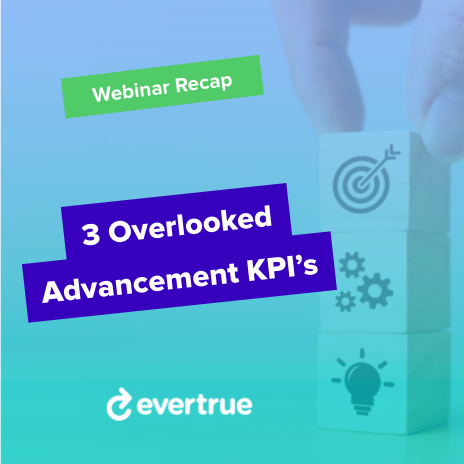After a summer chock-full of RAISE goodness, we had so many takeaways to share. We boiled them down into three key performance indicators that every advancement organization needs to focus on in FY21 and beyond.
Now more than ever, we have to understand, measure, and improve the experience of every single donor. It’s time to go beyond counting dollars, gifts, and visits to truly understand the health of our organizations.
Donor retention, gift pipeline, and personal stewardship are the three metrics your team needs to focus on during FY21 and beyond. In this series of posts, we’ll break down what these metrics mean and why they are so important. Skip to part 2 of the series or part 3 of the series.
So let’s get started…

Donor retention
“Donors are down, dollars are up.” It’s been a common refrain for advancement for years — decades even.
We’ve said that this model is unsustainable for a long time. Declining donors means shrinking pipelines for critical major gifts. And it illustrates there are gaps between donor expectations and the experience they receive.
This current global pandemic is pushing advancement to a tipping point. During the last four months of FY20 (February-June of 2020), donors and overall giving ground to a halt the same way the economy did.
During the last half of FY20, across the industry, gifts declined by a year-over-year average of 17.5% with few institutions adding donors. In some cases, the decline was precipitous.
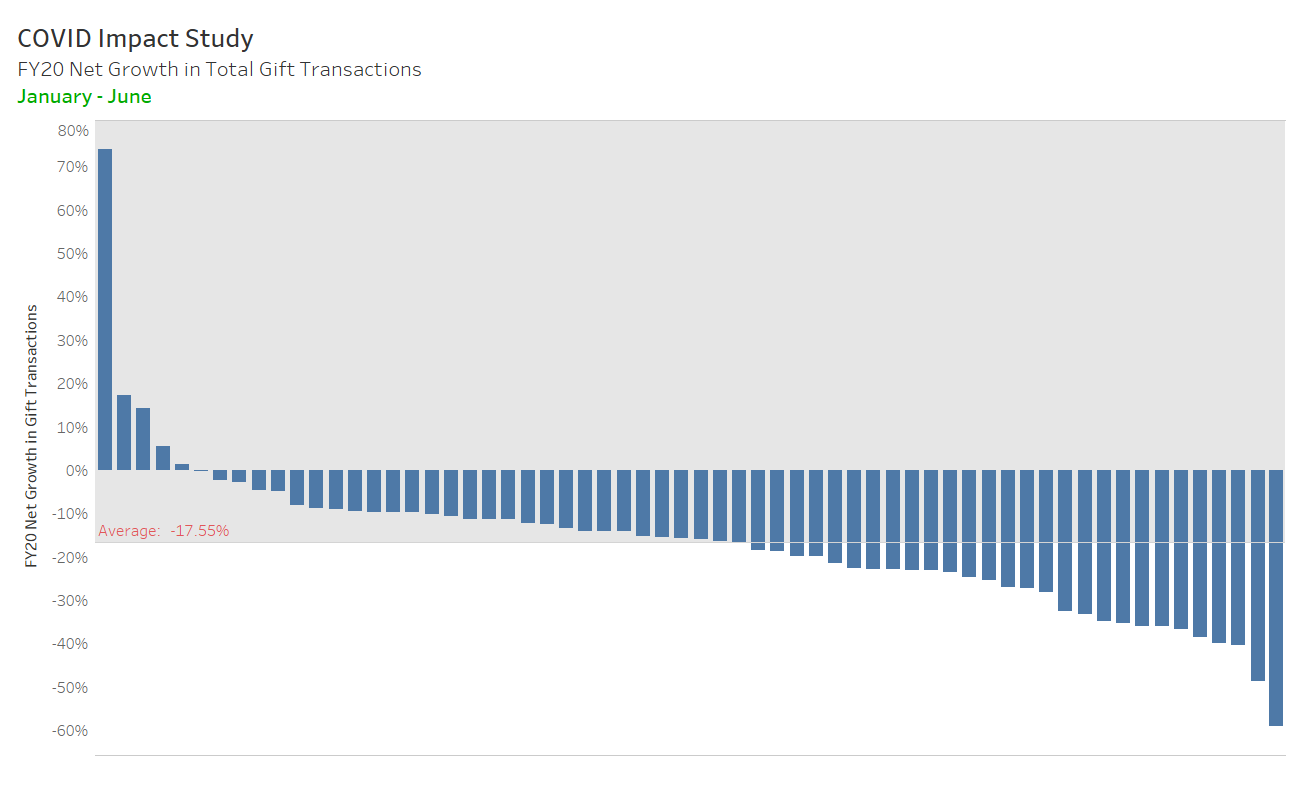
It was a terrible conclusion to the fiscal year. And, while early, it appears the downturn is extending into the first quarter of FY21, as well.
With fewer donors giving less money, it is absolutely critical to stay close to the donors that are close to us and make retention a top priority.
Donor retention, combined with small gains in donor acquisition, is the fastest way to grow the donor pool, provide sustained and reliable unrestricted funding, and creates a broader major gift pipeline.
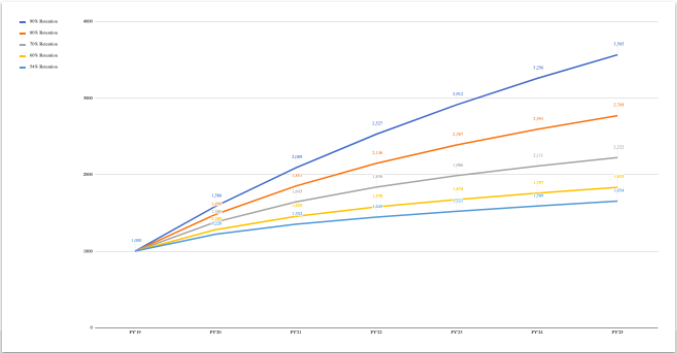
Yet too few institutions have made retention a top priority. During the webinar, 52% of attendees didn’t know their organization’s donor retention rate for last year. In a world where it costs five times more money to attract a new customer versus retaining an existing one, retention is everything.
The best way to increase retention is to deliver amazing donor experiences that make it absolutely irresistible to give and give again.
You do that by starting with the donor’s interests and priorities — not the institution’s. And here’s what that looks like.
Florida State University Foundation
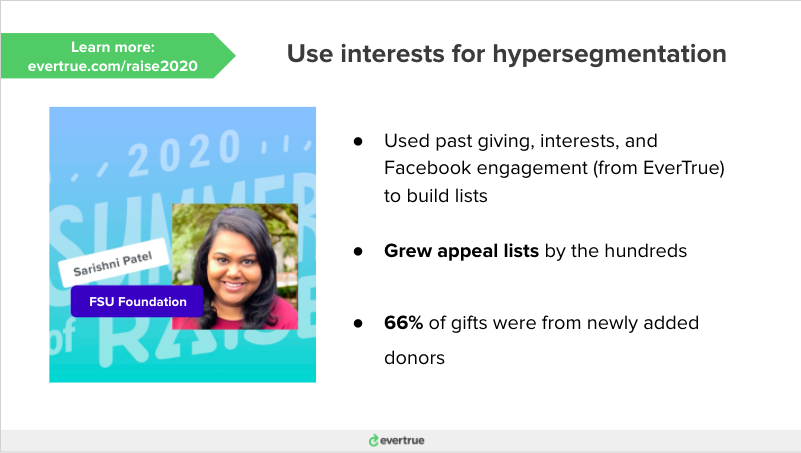
Watch Sarishni’s RAISE presentation to see how the FSU Foundation is creating hyper-targeted appeals connected directly to donor interests. (9-min video)
Oregon State University Foundation
Donor Experience Officers deliver a completely personal, 1:1 giving experience
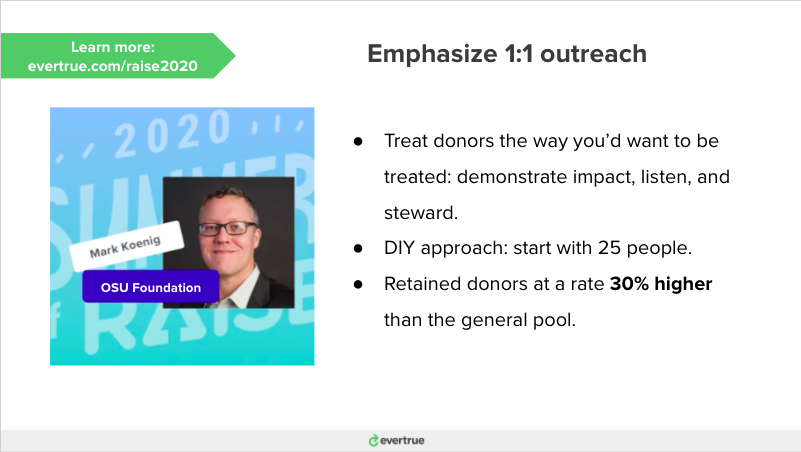
As an early EverTrue Premier partner, the Oregon State University Foundation is embracing today’s fully digital fundraising environment and using technology to power a team of Donor Experience Officers (DXOs).
These DXOs use EverTrue and a suite of software to manage portfolios of 1,000 donors, delivering delightful, personalized experiences to each prospect via regular check-ins. Technology makes this type of outreach possible — and to be clear, this is not an old school mail merge or a computer-written email. These DXOs are fully customizing every video, email, and text message for each donor.
Oregon State has seen strong early returns from this approach. Not only are they uncovering overlooked major gift prospects, but they were able to retain donors in DXO portfolios at a rate 30% higher than then general donor pool (even during the pandemic).
Learn more about the OSU Foundation's DXO program and get a peek into the day in the life of a DXO. (6-min video)
Keep your loyal donors close
Whether it’s through personalization at scale or true one-on-one outreach, making every donor feel as if they’ve made a difference and delighting them with impact stories, appeals, or communication that’s tied to their interests is critical in today’s fundraising environment.
Donor retention has to be a top priority for every team that wants to grow both its donor base and its future major gift pipeline.
At the end of the day, it’s all about putting donors first. If we give our supporters a great giving and stewardship experience when we let them know how they’ve made a difference, and if we speak to each one as if they’re a person and not a number, everyone wins.
In the next part of this series about key performance indicators, we dive into building a strong major gift pipeline. Check it out.
If you just can’t wait, watch the full webinar recording here:
Full webinar recording: 3 KPIs for Advancement During COVID-19 and Beyond
